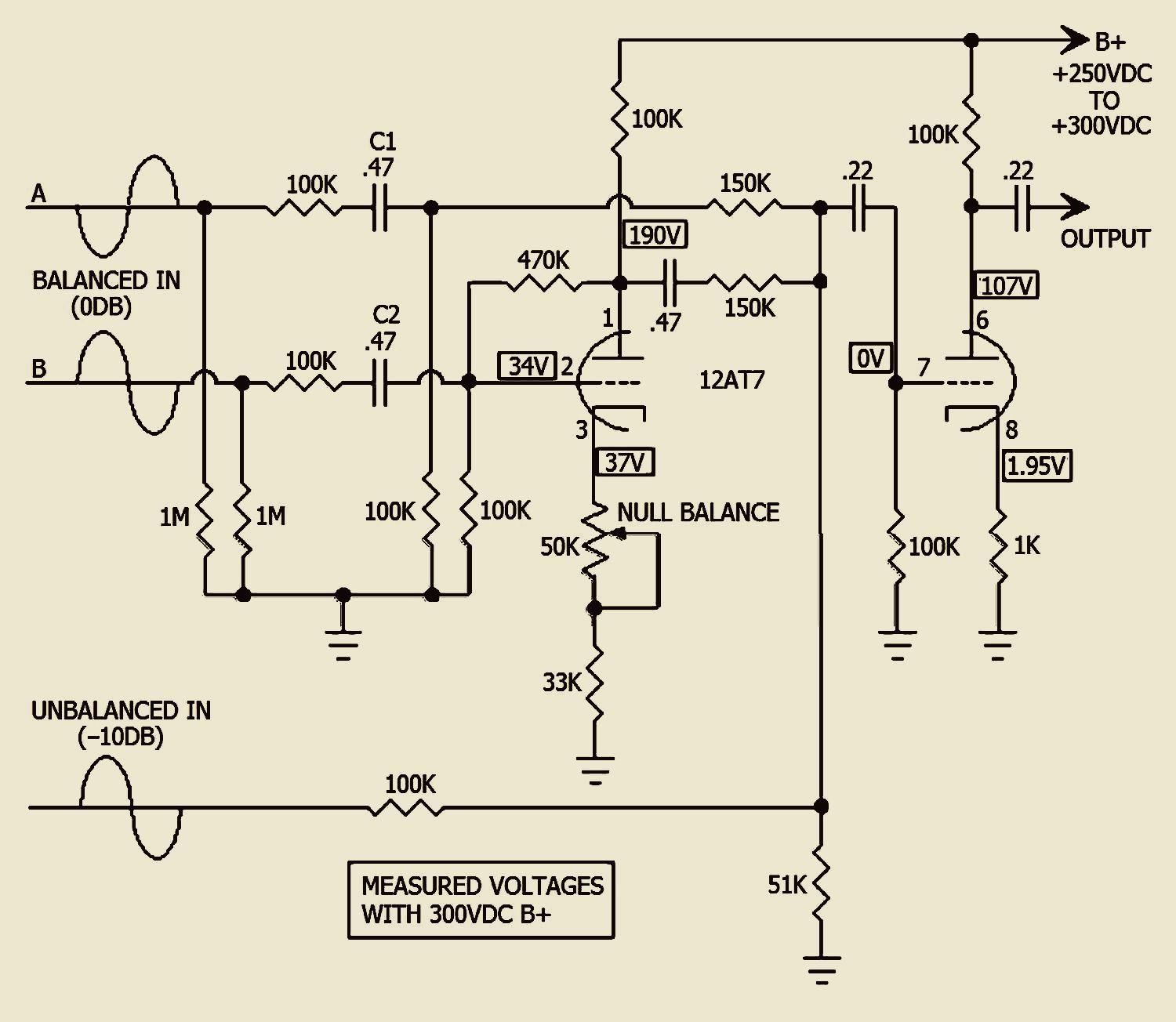

Balanced Input Amplifier
Using a 12AT7 Vacuum Tube
Balanced Input Amplifier
Using a 12AT7 Vacuum Tube
The following circuit provides both a balanced and unbalanced input using a 12AT7 vacuum tube. The first 12AT7 stage is used to provide signal inverting for one side of the balanced signal input. The other balanced signal side does not use any active circuits prior to mixing the signals. The second 12AT7 stage is used to make up for lost gain and provides an unbalanced input with 10 dB more gain than the balanced input. This provides a balanced input with a 0 dB input level and an unbalanced input with a −10 dB input level.

Many professional balanced inputs and outputs are low impedance. This active high impedance input is considered a bridging input. Active means the use of an amplifying stage without the use of an input transformer. Bridging refers to placing one circuit over another. High-impedance bridging inputs will work across either high or low impedance. The coupling capacitors and resistors must be the values indicated, or else common mode rejection will be less effective. The two 1M resistors on the balanced input serve to allow input capacitors to charge and equalize potential. This helps reduce the static pop when a connector is plugged into the balanced input.

